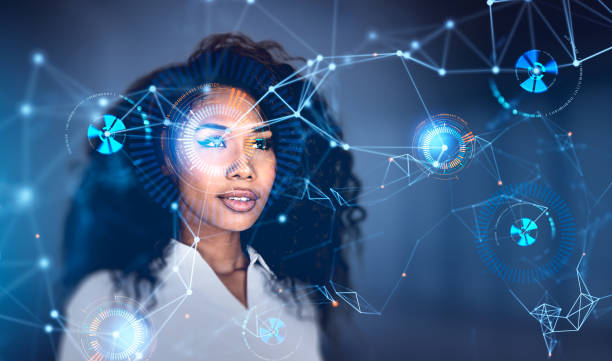Facial identification comes naturally to many individuals who are familiar with the features of their friends and family. This ease of recognition is based on the same principle. That faces verification services utilise, albeit on a much larger scale through algorithms. Instead of perceiving a face as humans do, recognition services perceive it as data.
While the general concept of face scanning is known to many, the specific process and how it accomplishes its tasks often remain unfamiliar. It’s worth noting that the power of this technology extends beyond discussions among technology experts; human rights politicians and advocates also evaluate its attributes. Staying well-informed about this technology is a wise decision to ensure organisations are protected from scamming activities.
Understand the Science Behind Facial Recognition
Facial verification systems utilise AI algorithms to compare clients’ faces with the images on their identity documents, guaranteeing authentication. This advanced technology eradicates the potential for scammers, including deep fakes, spoof attacks, and the utilisation of 2D or 3D face masks during the customer onboarding process.
The implementation of face verification not only shields organisations from fraudulent activities but also ensures adherence to KYC regulations. The era where face recognition technology was confined to the realm of science fiction movies is long gone. As incidents of data theft and identity fraud continue to escalate, companies worldwide can embrace verification services as a vital security measure.
Features of Facial Recognition Online
In addition to validating an individual’s authenticity, face verification encompasses supplementary features that are known to only a limited number of individuals. Hence, it’s crucial for companies to fully understand the advantages it brings before adopting this advanced biometric technology.
The general public has concerns regarding the ethics and privacy implications associated with face verification. Nonetheless, the benefits it brings outweigh these concerns. Here’s why an AI face recognition service is an exceptional proposition in the current era of digitisation.
1: Facial Recognition’s Capability Extends to Object Identification
The utilisation of face verification technology encompasses a diverse array of tools surpassing personal cognition. Its functionality extends beyond the identification of humans and includes the capacity to detect various objects. These algorithms are specifically trained to differentiate and categorise numerous entities, encompassing trees, cars, colours, and virtually any conceivable item. Experts have projected that the market worth of facial recognition is anticipated to reach $12.67 Billion by 2028.
2: The Importance of High-Quality Training Data in Face Verification Technology
Benefits of facial recognition, driven by artificial intelligence, typically depend on the data they receive during training. Consequently, they have the capacity to introduce biases. It is essential for leaders to leverage advanced technologies and embrace best practices to ensure the ethical and fair utilisation of AI.
3: Elevate Customer Experience Through Enhanced Security Measures
Face verification offers an added layer of security for user experiences, making it a valuable choice. It is crucial to have a clear understanding of data privacy laws that differ across jurisdictions. Additionally, companies must provide transparency regarding the storage and usage of collected information.
4: Simplify Everyday Life Through Streamlined Processes
Face verification is a technology that recognises and verifies individuals based on their facial characteristics. While there are certain limitations and policy considerations that need to be addressed. It has the capability to simplify various aspects of daily life. It has the potential to streamline travel and financial transactions, aid in the diagnosis of various conditions. Moreover, it assists businesses in identifying legitimate customers worldwide.
5: Unlock the Numerous Benefits Beyond Convenience
Machine learning facial recognition technology serves as a convenient and versatile tool. It aids law enforcement in locating missing children and identifying potential suspects. Moreover, this technology has been utilised to develop mobile applications that assist visually impaired individuals in interpreting the facial expressions of others.
6: Impeding Widespread Adoption: The Influence of Current Legislation as a Barrier
The adoption of facial recognition systems is significantly hindered by existing regulations. Many countries have enforced bans on its usage due to concerns about unauthorised and malicious activities. The challenge lies not only in determining the appropriate regulations but also in deciding which level of government should establish them. Without clear and cohesive guidelines, the development and sale of facial recognition services become complicated or confusing for service providers.
7: The Formidable Challenge of Hacking Facial Recognition
Face verification presents a formidable hurdle for hackers, unlike other authentication methods. This is due to its reliance on facial features to verify individuals and grant them access to specific services, in contrast to passwords that are more susceptible to being compromised by cybercriminals.
Key Takeaways
Despite existing legal barriers, facial verification technology remains a robust deterrent for hackers due to its reliance on facial features for authentication. Unlike other methods that are susceptible to cybercriminal compromises, facial verification offers a higher level of security.
In the pursuit of heightened security and streamlined operations, it is crucial for businesses to fully grasp and utilise the key features of facial verification services. By staying informed and making informed decisions, organisations can unlock the advantages of this advanced biometric technology while upholding ethical standards and regulatory compliance.

